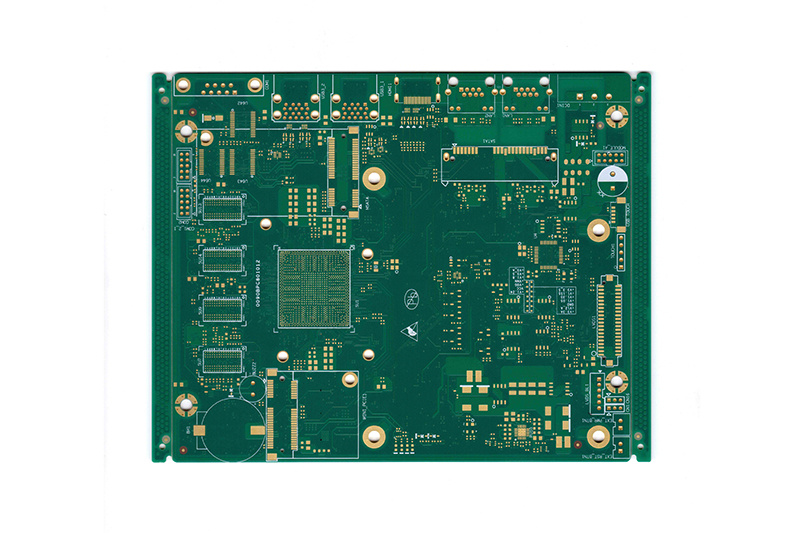Why use ceramic circuit boards
General PCB is formed by laminating copper foil and substrate. Due to reasons such as thermal stress, chemical factors and inappropriate production process in processing of , , PCB substrate is prone to bending to varying degrees. Another PCB substrate, namely ceramic circuit board , is greatly superior to ordinary glass fiber PCB substrate in terms of heat dissipation performance, power-carrying capacity, insulation, thermal expansion coefficient, etc., and is widely used in high-power electronic modules, aerospace, military electronics and other products.
We usually usePCB adhesive to bond copper foil and substrate. Ceramic circuit boards combine copper foil and ceramic circuit board by bonding under high temperature environment. The bonding force is strong, the copper foil does not fall off, the reliability is high, and can maintain stable performance under high temperature and humidity environment. The main materials of ceramic circuit board are 1,
alumina (Al2O3)
alumina, which is the most commonly used substrate material in ceramic circuit board
ceramic circuit board
is divided into
2, beryllium oxide (BeO)
ceramic circuit boards will drop rapidly when the temperature exceeds 300 ℃ if they are suitable for situations with higher thermal conductivity than metal aluminum and require high thermal conductivity, but their toxicity limits their own development.
aluminum nitride (AlN)
aluminum nitride ceramics are aluminum nitride powder-based crystal phase ceramics ,
ceramic circuit board , which have high insulation resistance, high insulation withstand voltage and low dielectric constant. Its thermal conductivity is 710 times that of Al2O3, and its coefficient of thermal expansion (CTE) almost matches that of silicon chips, which is very important for high-power semiconductor chips. In the manufacturing process of ceramic circuit board , the thermal conductivity of AlN is greatly affected by the residual oxygen impurity content, which can reduce the oxygen content and significantly improve the thermal conductivity. The thermal conductivity of the current process production level has reached 170W/(m · K) or more.
ceramic circuit board
Previous Page
Previous Page
The circuit board factory talks about the application advantage analysis of FPC in wearable devices.
2023-07-28
The FPC mentioned by the editor of the circuit board factory has excellent performance and plays an indispensable role in electronic products, meeting the development needs of smart phones and smart wearable devices. With the trend of miniaturization and thinning of electronic products, the consumption of FPC flexible circuit boards is increasing and booming.
Multi-layer circuit board factory-multi-layer circuit board compatible design points description.
2023-07-28
Most electronic products are inseparable from the component is multilayer circuit board, and the production quality of multilayer circuit board factory directly determines the use of electronic equipment and the use of quality, there are many points in the circuit board processing related to the compatibility of multilayer circuit board, and then affect the quality of the circuit board. What are the main points of the compatibility design of multilayer circuit boards under the popular science?_multilayer circuit board_multilayer circuit board factory_blind buried hole circuit board_HDI board proofing
2023-07-28
In the graphic electroplating process method of multi-layer circuit board factory, because the circuit pattern is easy to produce side etching in the etching process, the tin-lead alloy plating part is in the air and produces a suspension layer, which is easy to fall off, resulting in a short circuit caused by bridging between wires. Multilayer circuit board factory uses infrared hot melt process method, can make the exposed copper surface get very good protection. However, when it is used for infrared thermal melting of multi-layer circuit boards, the phenomenon of delamination and foaming between layers of multi-layer circuit boards is very serious due to high temperature, resulting in a very low yield of multi-layer circuit boards. _Blind buried hole circuit board_multilayer circuit board
2023-07-28
Before designing multilayer circuit boards, the multilayer circuit board structure must be determined according to the circuit scale, circuit board size and electromagnetic compatibility (EMC) requirements. That is to decide whether to use a 4-layer, 6-layer or higher multilayer circuit board. Once the number of layers is determined, the multilayer circuit board factory has decided to determine the placement of the electrical layers in the multilayer circuit board and how to distribute different signals on these layers. This is the choice of multilayer circuit board factory laminated structure.


